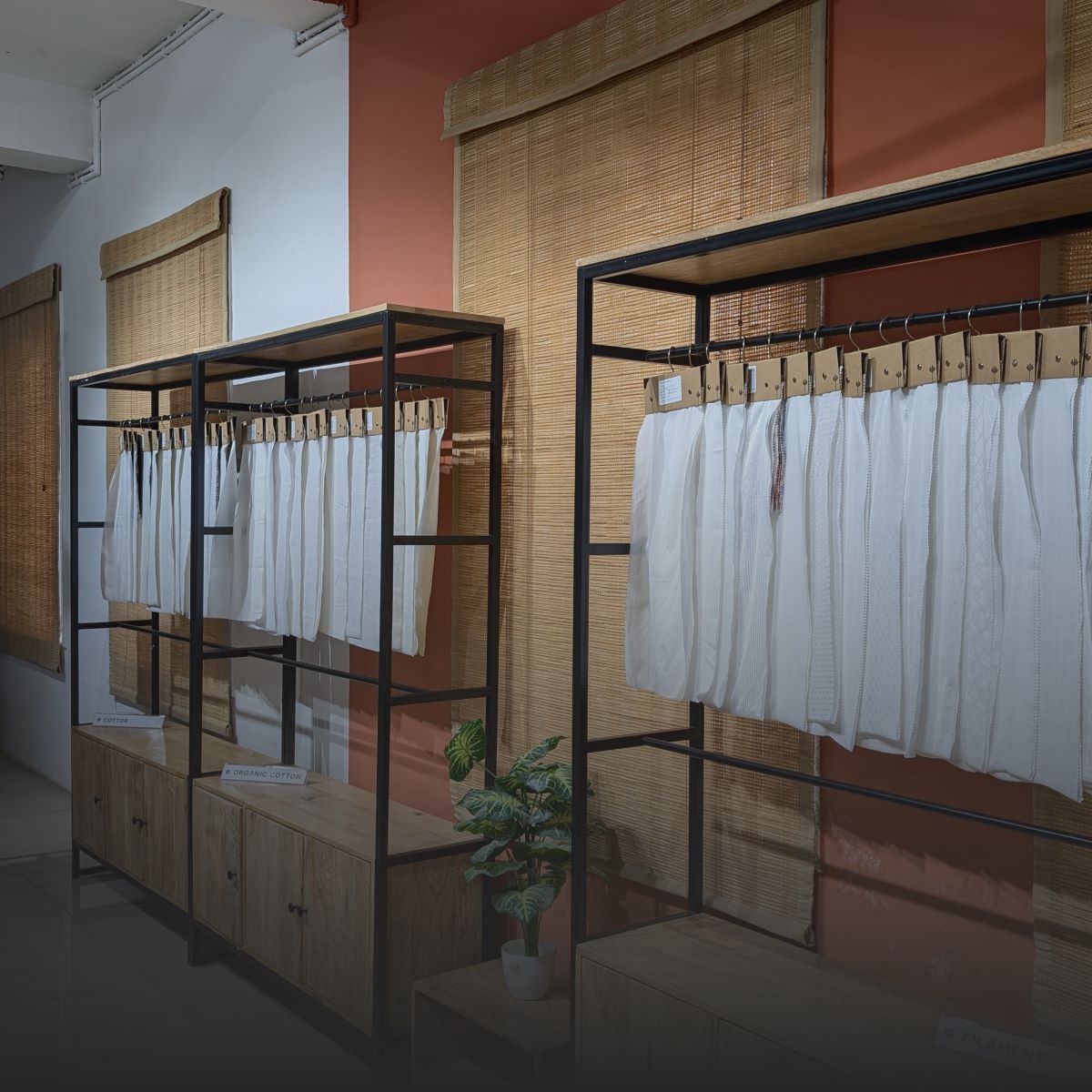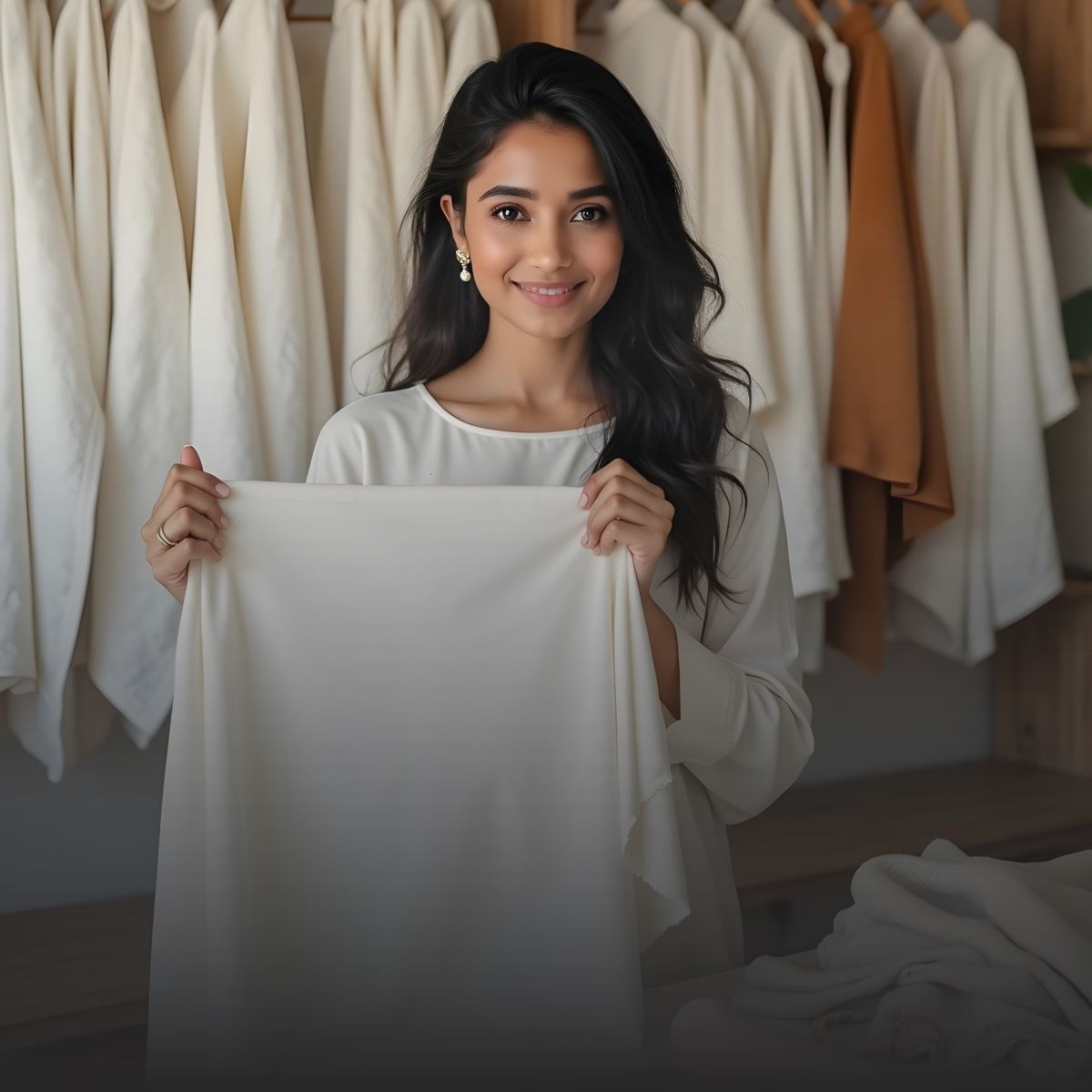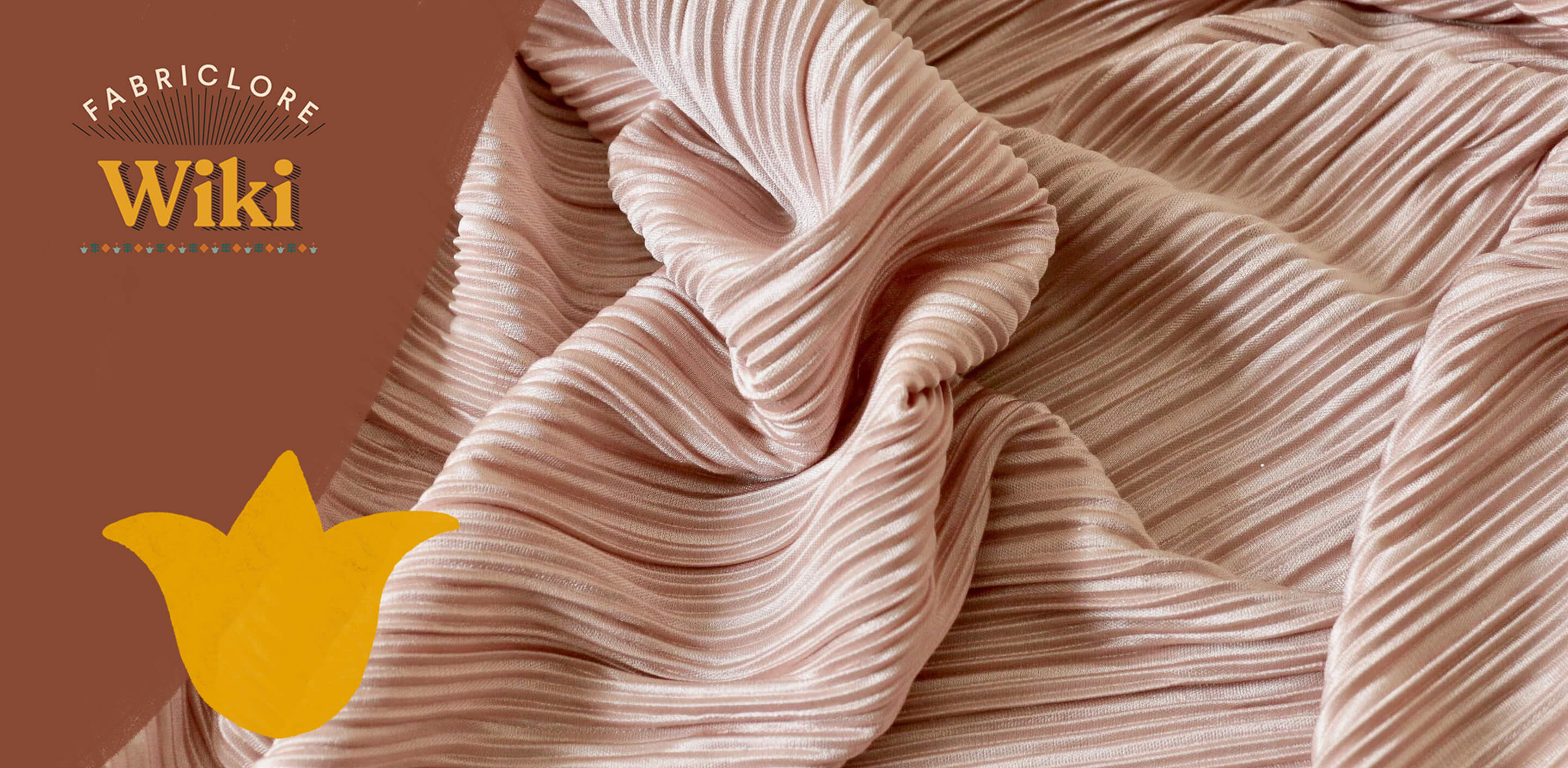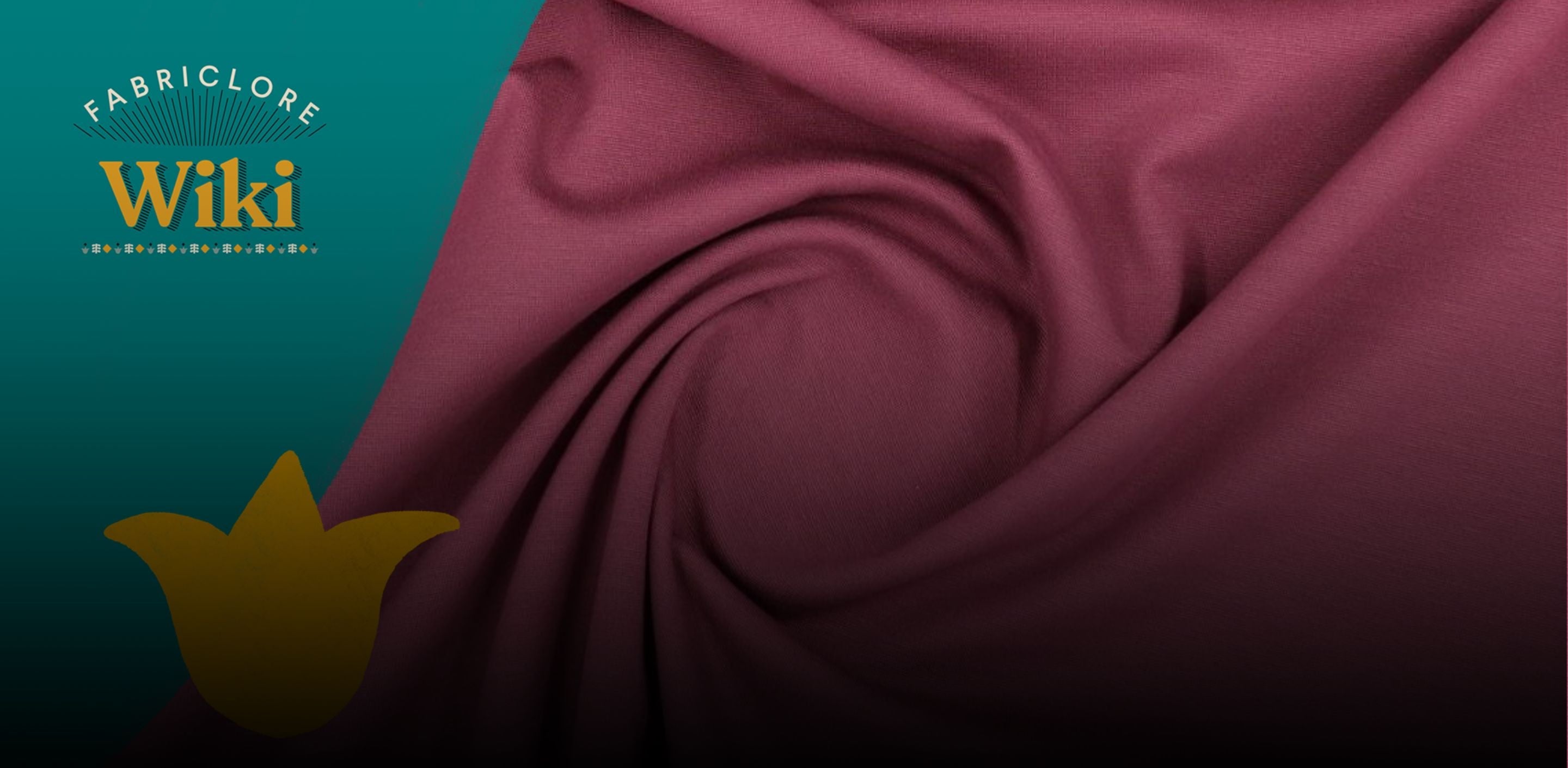What is Pongee Fabric?
Pongee fabric is a lightweight to medium-weight woven textile known for its slubbed texture, fine warp and irregular weft. Traditionally made from silk, it is now also available in cotton, wool and synthetic blends. Pongee is commonly used for linings, dresses and umbrellas due to its durability, water resistance and easy printability.
Key Highlights
-
Texture & Weave: Features a smooth yet subtly irregular texture, thanks to its slubbed weave—where uneven yarns create natural variations.
-
Original Composition: Originally made from hand-spun wild silk, offering a soft hand-feel and breathable structure.
-
Modern Variants: Now also produced using cotton, wool, polyester and nylon to meet different performance needs and budgets.
-
Common Uses: Frequently used in fashion linings, scarves, umbrellas, jackets and lightweight blouses.
- Print-Ready: Its uniform surface makes it an excellent base for custom printing, logos and patterns.
Why it Matters
Understanding what pongee fabric is helps fashion designers, sourcing agents and brand owners choose a textile that delivers on aesthetics, function and sustainability—especially in categories like outerwear, linings and accessories.
Origins and History of Pongee Fabric

Pongee fabric originated in ancient China and was traditionally handwoven using wild silk. It gained popularity in the early 20th century as an export fabric to the West, especially the United States. Known for its slubbed texture and fine quality, pongee was initially used in tribute garments before evolving into a widely produced and industrialized textile.
A Fabric Rooted in Chinese Heritage
-
Ancient Beginnings: Pongee has deep roots in Chinese textile history, originally woven by hand using wild silk fibers in rural households.
-
Tribute Textile: In imperial China, pongee was used to craft tribute garments for nobility and officials—valued for its fine yet rustic feel.
-
Production Regions: Historical centers of pongee weaving include Zhejiang, Anhui, Sichuan and Jiangsu provinces—regions known for silk craftsmanship.
-
Early Global Trade: In the early 1900s, pongee became a popular export fabric, especially to the United States and Europe, where it was marketed as a lightweight, high-quality silk fabric.
-
Industrialization Era: Around 1897, factories began mass-producing pongee using mechanical looms. This introduced uniformity, quality control and broader accessibility, transforming pongee into a mainstream fabric.
- Transition in Usage: What began as an elite textile eventually became widely used in both fashion and functional items like umbrellas and linings—adapting to modern textile demands.
How is Pongee Fabric Made?

Pongee fabric is made through a plain weave technique using fine warp yarns and irregularly twisted weft yarns, which produce its signature slubbed texture. While originally woven from wild silk, pongee is now made using cotton, wool, linen or synthetic fibers like polyester. Its production varies by fiber type and end use, offering options for both luxury and everyday applications.
The Slub Weaving Process
-
Plain Weave with Character: Pongee uses a simple plain weave, but with a twist—literally. The weft yarns are intentionally twisted or uneven, creating visible slubs that give the fabric its natural, textured appearance.
-
Fine Warp, Irregular Weft: The warp yarns (vertical) are kept smooth and uniform, while the weft yarns (horizontal) have natural inconsistencies. This creates a balance of softness, structure and visual texture.
-
Traditional Roots in Wild Silk: Authentic pongee was originally made from Tussar (wild) silk, valued for its durability and matte finish. This made it a staple in traditional Chinese garments.
-
Adapted to Modern Fibers: Today, manufacturers use cotton, wool, linen and especially polyester to make pongee. This allows for greater affordability, functionality, especially in umbrellas and linings.
-
Eco and Performance Choices:
- Choose silk pongee for natural feel and biodegradability
- Opt for polyester pongee for durability and easy maintenance
- Choose silk pongee for natural feel and biodegradability
Weight and Weave
-
Typical Weight Range: Pongee fabric generally ranges from 36 GSM to 50 GSM, which determines how light, breathable or structured the final product feels.
-
Paj Pongee:
- A very lightweight silk variant of pongee
- Commonly used for delicate linings in high-end fashion
- Offers soft drape and subtle luster
- A very lightweight silk variant of pongee
-
Tsumugi Pongee:
- A heavier silk-based version
- Features finer slubs and a more consistent surface
- Often used in luxury kimonos, jackets and formalwear
- A heavier silk-based version
Key Properties of Pongee Fabric

Pongee fabric is valued for its lightweight yet durable structure, slubbed texture and easy printability. It offers a soft drape, breathability and resistance to shrinking and wrinkling—making it suitable for linings, apparel and outdoor products like umbrellas.
Performance & Feel
-
Soft Yet Structured: Pongee has a smooth hand feel with a subtle, natural texture due to its slubbed weave. It feels soft against the skin but maintains enough structure for lining and outerwear use.
-
Lightweight and Breathable: The fabric’s light to medium weight allows it to remain breathable while providing adequate coverage. Ideal for garments that need drape without bulk.
-
Elegant Drape: Whether made from silk or synthetics, pongee drapes well without being too stiff or too clingy. This makes it a popular choice for dresses, scarves and flowing linings.
- Natural Appearance: The irregular slubs in the weave create a matte or semi-gloss finish that adds depth and character—especially desirable in both casual and formal garments.
Durability and Washability
-
Abrasion Resistant: Pongee—especially polyester versions—is resistant to wear and tear, making it ideal for items that face frequent use such as jackets or umbrellas.
-
Shrink and Wrinkle Resistant: The fabric maintains its shape and texture after washing, which is especially important for linings and lightweight fashion items.
-
Machine-Washable (Synthetic Types): Polyester pongee is easy to clean, quick-drying and resistant to mildew, which reduces maintenance costs for brands and end users.
- Colorfast and Fade-Resistant: Pongee holds dye well, meaning printed designs or dyed batches remain vibrant and long-lasting, even after multiple washes or outdoor exposure.
Types of Pongee Fabric
Silk Pongee
-
Premium and Natural: Silk pongee is made from natural silk fibers, offering a luxurious feel and biodegradable properties.
-
High-End Applications: Ideal for couture wear, scarves and premium garment linings where elegance and softness are essential.
- Eco-Friendly: Being a natural fiber, it supports sustainable fashion by reducing synthetic waste.
Synthetic Pongee
-
Commonly Polyester: Most synthetic pongee is woven from polyester yarns, making it durable and affordable.
-
Versatile Usage: Widely used in umbrellas, jackets, bags and promotional items due to its strength and water resistance.
-
Waterproof and Easy to Print: Polyester pongee offers excellent water repellency and a smooth surface ideal for vibrant custom printing.
- Cost-Effective: A practical choice for mass production with consistent quality and lower price points.
Tsumugi and Paj Pongee
-
Tsumugi Pongee: Features less prominent slubs and a smoother, more uniform texture, suitable for refined garments requiring subtle elegance.
- Paj Pongee: Known for being very lightweight and delicate, Paj is commonly used in linings and delicate apparel where minimal bulk is preferred.
Common Applications of Pongee Fabric

Pongee is widely used in fashion, home textiles and accessories. Common applications include linings in garments, lightweight dresses and blouses and high-quality umbrellas due to its waterproof and printable surface.
Fashion & Apparel
- Used in jackets, dresses and blouses because of its lightweight yet durable nature.
- Popular in scarves and traditional garments like kimonos, where softness and drape are important.
- An excellent lining material for suits, coats and dresses, enhancing comfort and structure without adding bulk.
Umbrellas & Outdoor Gear
- Offers a printable surface for custom designs and branding on umbrellas and outdoor gear.
- Known for being wind-resistant, making it ideal for outdoor products.
- Commonly used at fabric densities of 190T and above for strength and performance.
Home & Craft
- Applied in decorative linings and soft furnishings, adding texture and durability.
- Used for traditional gift wraps (furoshiki), fabric crafts and handmade bags or pouches, thanks to its soft yet strong characteristics.
Pongee vs Nylon & Polyester: What’s Better?
|
Feature |
Pongee |
Nylon |
Polyester |
|
Texture |
Subtle slub, matte or semi-glossy |
Smooth, shiny |
Glossy, synthetic feel |
|
Water Resistance |
Excellent (synthetic pongee) |
Good |
Good |
|
Print Quality |
High – ideal for logos/designs |
Moderate |
Moderate |
|
Sustainability |
Silk pongee is eco-friendly |
Non-recyclable |
Often non-recyclable |
|
Color Retention |
High |
Fades easily |
May discolor in UV |
|
Durability |
High (especially 190T+) |
Moderate |
Moderate |
Why Fashion Designers Prefer Pongee Fabric
Fashion designers choose pongee fabric because it perfectly balances aesthetic appeal with functional performance. Its versatility suits various categories like fashion, outerwear and accessories. Sustainable silk options make it attractive for eco-conscious brands, while its high customizability supports branding and printing. Pongee is ideal for both small and large production runs.
-
Combines beauty and function: Pongee offers a unique slubbed texture with a smooth finish, giving garments a sophisticated look without compromising durability and comfort.
-
Versatile uses: Suitable for diverse categories including fashion apparel, outerwear and accessories, making it a go-to fabric for designers who want flexibility.
-
Eco-friendly options: Natural silk pongee is biodegradable and sustainable, attracting designers committed to environmentally responsible fashion.
-
Customizable for branding: Its excellent printability allows for vibrant designs, logos and patterns, helping brands create distinct identities.
- Adaptable sourcing: Whether designers need low minimum order quantities (MOQs) for prototypes or large batches for full collections, pongee fabric suppliers accommodate these needs, supporting both emerging and established brands.
Where to Source Pongee Fabric in Bulk?

You can buy good-quality pongee fabric in bulk from trusted fabric suppliers in the USA and Canada. Look for sellers who offer low minimum orders, custom printing and eco-friendly options. Fabriclore is one such supplier that offers silk and polyester pongee with worldwide shipping and support for businesses.
- Choose suppliers based in the USA or Canada for faster delivery and easier communication.
- Look for low minimum order quantities (MOQs) if you want to order small batches.
- Many suppliers offer custom printing and dyeing to create unique designs.
- You can find both silk pongee (for luxury items) and polyester pongee (durable and affordable).
-
Pongee fabric is great for clothing brands, umbrella makers and fabric stores.
- Fabriclore is a reliable option that supports small and large orders and ships globally.
Final Thoughts
Pongee fabric stands the test of time as a smart, stylish and sustainable textile. Whether you're building a fashion collection, designing high-quality linings or creating promotional umbrellas, pongee delivers on performance, durability and elegance. Designers looking for a fabric that combines heritage and modern practicality will find pongee to be a clear winner.
FAQs
What kind of fabric is pongee?
Pongee is a lightweight to medium-weight woven fabric known for its distinctive slubbed texture. Traditionally, it was made from silk, giving it a smooth yet slightly textured feel. Today, pongee is also available in cotton, wool and synthetic blends like polyester. This fabric is breathable, durable and has a fine weave that makes it popular for garment linings, dresses and umbrellas. Its unique texture and lightweight nature make it both comfortable to wear and visually appealing.
Is pongee better than polyester?
Pongee offers a more natural look and feel compared to polyester. It has a matte finish with subtle texture, while polyester tends to be shinier and smoother. Pongee holds dye well, making it excellent for printing detailed designs. It is also more breathable and comfortable, especially when made from silk or cotton blends. Polyester, on the other hand, is usually more affordable and has strong water resistance. For applications like high-quality linings, umbrellas and fashion items where appearance and feel matter, pongee is often the better choice.
What are the disadvantages of pongee fabric?
One downside of pongee, especially silk pongee, is that it can be more expensive than synthetic alternatives like polyester. It also tends to wrinkle more easily and may require gentle washing or dry cleaning to maintain its quality. Natural pongee is not fully waterproof and can be less durable when exposed to heavy wear or harsh conditions without proper care. Additionally, because pongee comes in different variants, sourcing the exact type you need might take some effort, especially for bulk orders.
Is pongee waterproof?
Pongee fabric has excellent water resistance, especially the synthetic versions made from polyester. It effectively stops water from passing through and dries quickly, which is why it is a preferred fabric for umbrellas, raincoats and windbreakers. This water resistance also makes pongee ideal for sportswear, outdoor apparel and travel clothing where protection from rain and wind is important. However, natural silk pongee offers limited water resistance and is not fully waterproof. When choosing pongee for waterproof needs, look for synthetic types with higher thread counts for the best performance.
We also happen to be a magnet for suggestions, and would love to catch yours….throw us yours on hello@fabriclore.com





Leave a comment
All comments are moderated before being published.
This site is protected by hCaptcha and the hCaptcha Privacy Policy and Terms of Service apply.